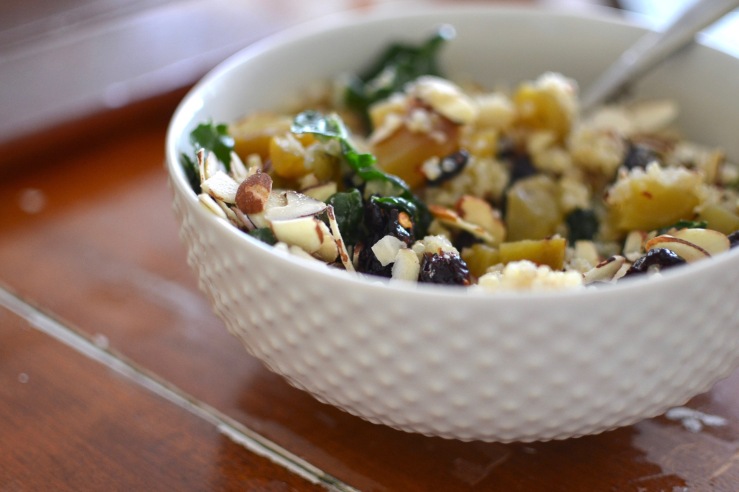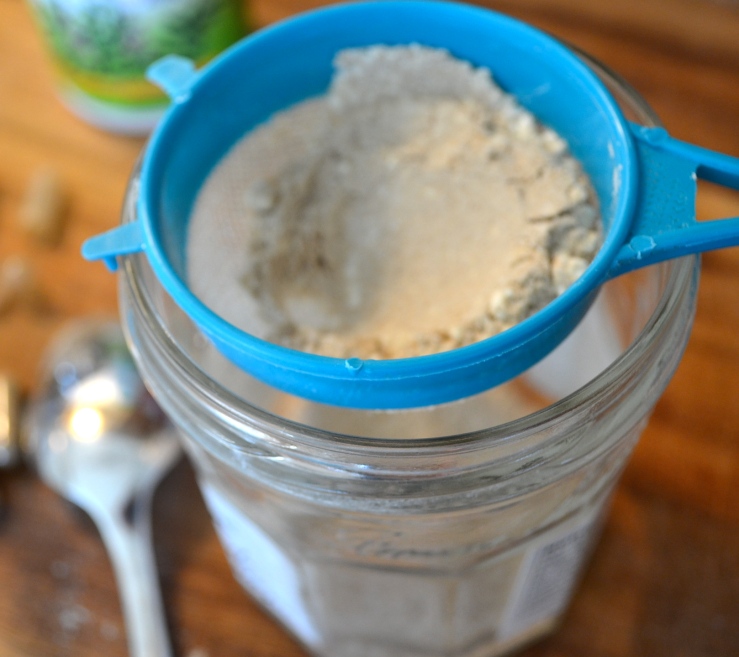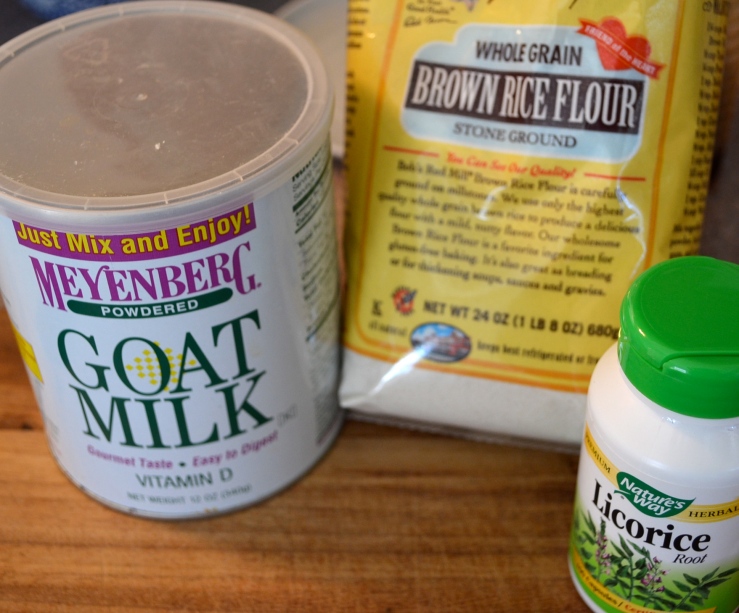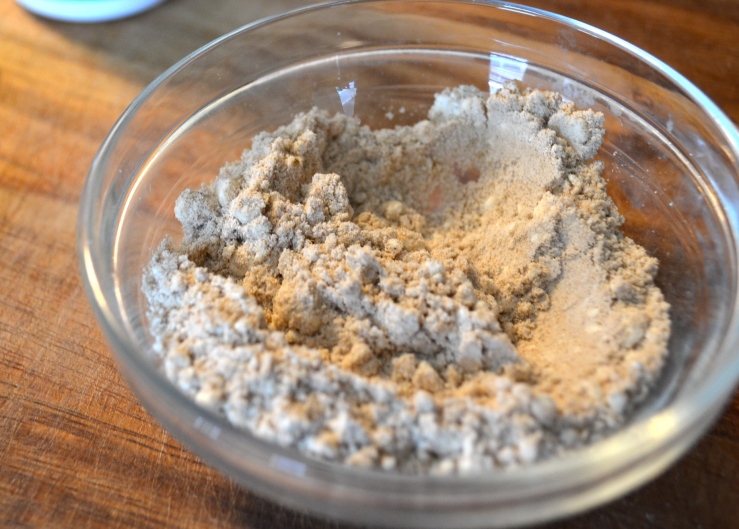OK, I hate to post about stuff like this, and I’ve written about one of these before, but I wanted to share 2 things I use to make money back on stuff I already have to buy anyway. One of them (Ibotta)* I’ve just started using and have made $30 on in the first 3 weeks of using it, and the other (Ebates)* I’ve made $68 on since I started using it in 2015. So ok, that’s not a lot of money.
BUT I wanted to share this because Ebates is the easiest thing in the world to use, and right now (just for a week) it’s offering 15% cash back on purchases from over 400 stores.
Stores like Boden, Aveda, The Container Store, Le Creuset, Lou and Grey, Madewell, Melissa & Doug, Sierra Trading Post, basically almost any website that sells clothes, skincare, shoes, or anything else.
All you have to do is sign up, and then either:
- Go to any website from the Ebates website (you can browse by category or search alphabetically for a store), and the money will go right into your account, and they can send it to a PayPal account, etc.
- Go to the bottom of the website and find the column that says APPS, TOOLS, AND SERVICES. Underneath that you’ll want to click on “Ebates button”. Once you get that set up, whenever you visit any website that participates in Ebates a little box will pop up on your screen and tell you exactly how much cash back you’ll get if you make a purchase. See picture below (guys! I figured out how to take screen shots! I hope everyone is proud of me!). Then you’ll click “Activate 15% cash back” and shop as usual, and you’ll get 15% back.

I know all of this is a little contrary to my recent posts about shopping secondhand. I STILL advocate buying things gently used when at all possible, but there are times when you might need to buy something new. Just promise, if you do sign up for Ebates, you won’t use it to justify purchases you wouldn’t have made otherwise!!!!! Just use it if there are things you need, and maybe you could get them right now while you can get 15% back. But it’s always better to not buy anything at all, cf. this guy.
And then, Ibotta! This one I’ve been using for groceries, though you can also get money from shopping through shopping on Amazon mobile, and things like flights and hotels. You can use it at almost any grocery store: Harris Teeter, Wegmans, Krogers, Whole Foods, Walmart, CVS, Walgreens, and a ton of others (see partial list below). All you do is sign up and then search the current “offers”, which will be things like $0.75 cash back when you buy a certain kind of kombucha or a certain brand of salsa. (They also have offers for any brand of eggs, bread, milk, shredded cheese, bananas, kale, etc. So you can buy what you normally buy but get cash back for it. Plus offers for organic food, gluten free items, etc.) Then when you’re done shopping you just take a picture of your receipt (in the app) and they automatically tally up however many purchases you made that correspond with offers you selected, and once you get to $20 you can transfer money to a PayPal account or you can get gift cards. (Below– photo from the Ibotta website, partial list of participating grocery stores.)
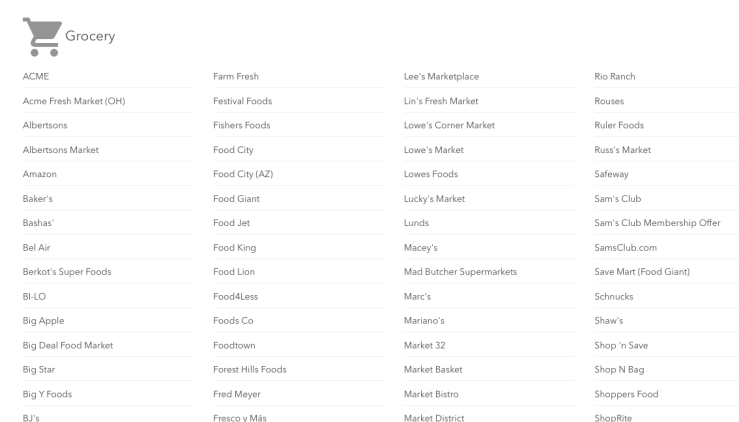
Also, when you sign up you’ll get a certain amount of time (mine was a month) to redeem a certain amount of offers (mine was $10– not sure if it changes), and then you get a welcome bonus (mine was $10). So it took a little bit of strategizing that first month, but still without buying anything I wouldn’t have normally bought I was able to get the $10 bonus, plus I’d made $10 from the offers I used.
Anyway. I don’t have time in life right now for anything complicated and unnecessary. But these two are both the easiest, and it’s nice to get a little money back, if you have to be spending money in the first place.
And of course, it’s better to not buy anything. And please don’t use these, or anything like these, as an incentive to buy something you otherwise wouldn’t.
Also, coming soon! Blog post about how the jeans I bought didn’t quite work, but how I bought another pair from eBay (also J Brand, and for only $30 this time) and then I bought a linen dress from another secondhand online venue, somewhat by accident, and some (more) thoughts in general about buying secondhand things.
I’m also going to write a post entitled “Ode to the Public Library (or How, if you Are a NY State Resident You Can Get a Library Card for the NYC Library System and get Any ebook or e-audio Book For Free, or How to Replace your Retail Therapy Habit with Getting Books for Free from the Public Library.”) Also, speaking of libraries I recently walked past the shelf in the fiction section that held the book Ivanhoe, and on a whim (because free books!!!!!) I picked it up and YOU GUYS. It’s delicious. But really, the essence of what I’m trying to say is please oh please spend less money and instead enjoy free things like library books and sunshine.
*And yeah, if you sign up using one of my links, I’ll get a small referral credit. Which I am hoping to use to buy shoes for my children, because one of them might not have any summer shoes right now.

